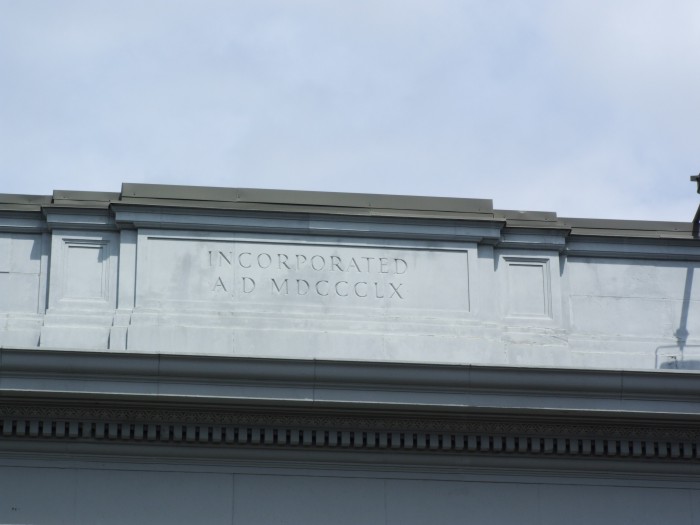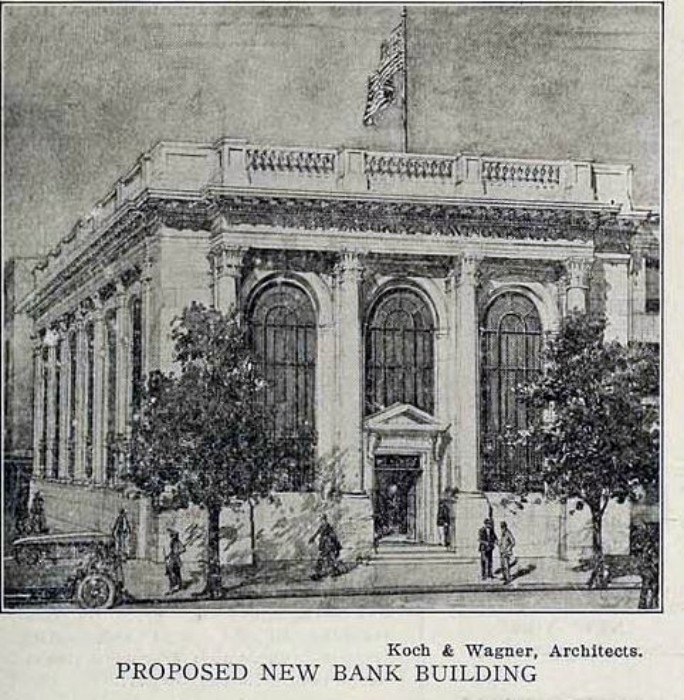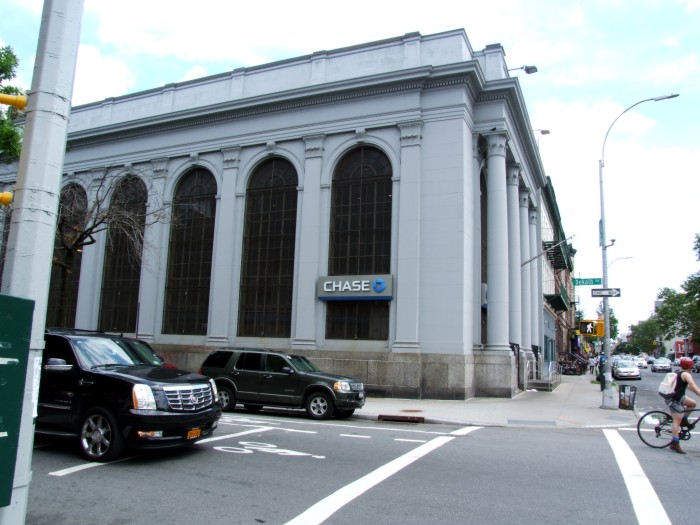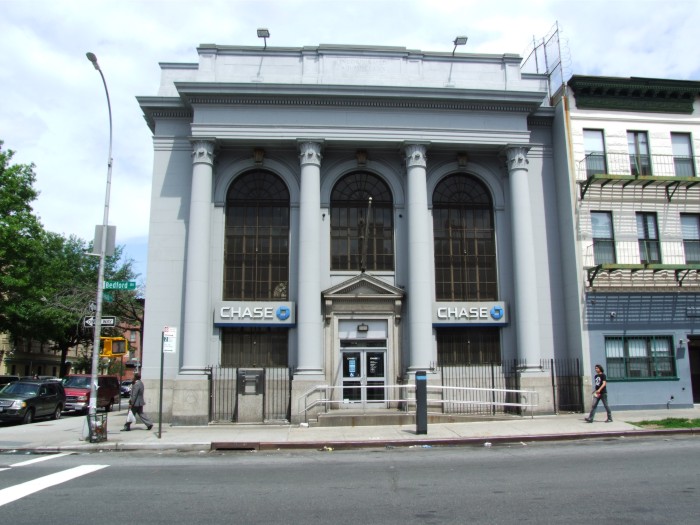Building of the Day: 971-975 Bedford Avenue, a Venerable Bank in Bedford Stuyvesant
Brooklyn, one building at a time. Name: Originally East Brooklyn Savings Bank, now Chase Bank Address: 971-975 Bedford Avenue Cross Streets: Corner DeKalb Avenue Neighborhood: Bedford Stuyvesant Year Built: 1920-1922 Architectural Style: Neo-classical Architect: Koch & Wagner Other works by architect: Ralph Bunche House, Kew Gardens; Ridgewood Masonic Temple, Bushwick Landmarked: No The story: The…
Brooklyn, one building at a time.
Name: Originally East Brooklyn Savings Bank, now Chase Bank
Address: 971-975 Bedford Avenue
Cross Streets: Corner DeKalb Avenue
Neighborhood: Bedford Stuyvesant
Year Built: 1920-1922
Architectural Style: Neo-classical
Architect: Koch & Wagner
Other works by architect: Ralph Bunche House, Kew Gardens; Ridgewood Masonic Temple, Bushwick
Landmarked: No
The story: The East Brooklyn Savings Bank was founded in 1860. Like most local banks of this period, it was started by area businessmen and merchants as a place where they could conveniently park their money, while offering the neighborhood banking services.
Savings banks were always popular in growing neighborhoods, in part because you didn’t have to be rich to have a savings account, just thrifty. And thrift paid off, as savings banks offered interest. The banks grew rapidly.
Soon after the bank incorporated, the first branch opened on the corner of Franklin and Myrtle avenues. It was a small building, and the bank soon moved to a larger building across the street at 643 Myrtle Avenue, where it stayed until 1922.
That building still stands, although the founders of this bank would never recognize it.
As time passed, the East Brooklyn Savings Bank grew, and eventually opened branches in Bay Ridge and other neighborhoods far from its base. It was among Brooklyn’s most successful savings banks.
On December 14, 1918, two robbers entered the Myrtle Street headquarters, which was busy due to the holidays. As they approached the teller’s window, the men pulled scarves up over their mouths and noses and quietly announced a holdup.
When the bank’s teller, DeWitt Peal, didn’t respond fast enough, one of the robbers shot and killed him. He also killed Harry W. Coons, the assistant treasurer. The robbers got away with a bag of money, jumping into a passing taxi and disappearing.
They left behind a multitude of clues, and the killer was eventually found and executed. That’s a whole other story.
Perhaps with this horrific incident in mind, as well as a need for more rooms and a more significant physical presence, in 1919, the bank announced that a new building was in the planning stage.
Real Estate Record and Builder’s Guide, 1919
This fine new bank was to be placed on the southeastern corner of the intersection of Bedford and DeKalb, in the business heart of that part of Bedford. The bank commissioned the firm of Koch & Wagner to design the building.
Arthur R. Koch and Charles Wagner were both from Brooklyn, and attended nearby Pratt Institute. At separate times, each was president of the Brooklyn chapter of the American Institute of Architects.
They had a partnership of almost 40 years, interrupted only by Koch’s death in 1951. During that period, they designed mostly banks, commercial buildings and clubhouses, although they also designed suburban houses, such as Ralph Bunche’s house in Kew Gardens, Queens.
Their best known Brooklyn building is probably the Ridgewood Masonic Temple on Bushwick Avenue, designed in 1920. They actually designed this bank first, but it was not begun until 1920, and finished in 1921.
In the Real Estate Record and Builder’s Guide of November 19, 1919, the new building was described as being clad in Indiana limestone. It was guaranteed fireproof, and the main space had 35-foot ceilings. There were safe deposit boxes and a series of vaults capable of holding trunks.
The teller’s counters and windows were marble, with wrought bronze and heavy glass partitions. The offices for the president, treasurer and assistant treasurer ran along the rear of the building, as did a board room and a ladies’ retiring room. A mezzanine gallery ran above the offices.
The article noted that Bedford Avenue was one of Brooklyn’s main arteries, and that the bank stood at the edge of a manufacturing district. Most of its customers already came from this district, and the bank was sure this branch would be especially convenient to them, as public transportation was readily available just outside the door.
The East Brooklyn Savings Bank was active throughout much of the 20th century. During the course of the century, it acquired several other small Brooklyn banks, and grew its customer base.
In 1969, the bank changed its name to Metropolitan Savings Bank. Several years later, in 1973, Metropolitan gave up its main branch, selling it to Manufacturers Hanover Bank. Manufacturers Hanover was later acquired by Chase, and the bank has been a Chase branch since 1992.
The bank is now painted gray. This makes no sense. Dirty limestone doesn’t need paint, it needs cleaning. The building’s ornate cornice frieze is also gone, as is the upper parapet. It is still a striking presence on Bedford Avenue, which is busier than ever.
Photos by Suzanne Spellen










Good to know. I often pass and sometimes use that bank. Really ashame it was not kept in its original state.